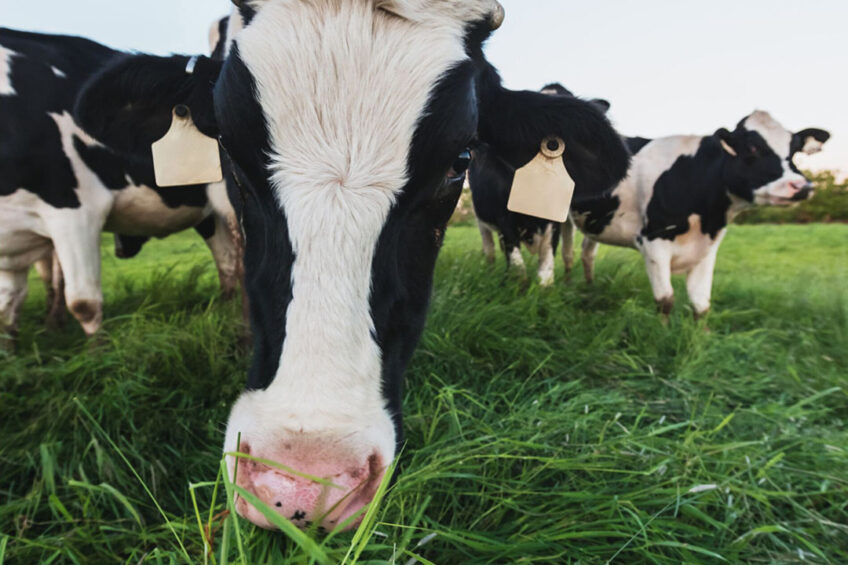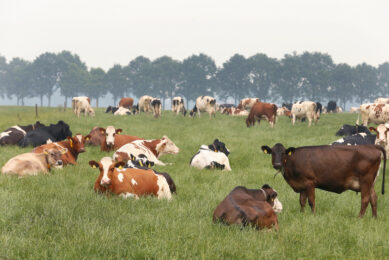Breeding lower methane cows

Genetics company Semex UK believes it can reduce methane production by 20-30% by 2050 through breeding lower methane cows.
The company has been working with Canada’s milk recording and genetic evaluation firm Lactanet and the University of Guelph to find a genetic solution to methane emissions.
Over the past 5 years, Canada’s milk-recording organisations collected over 13 million milk mid-infrared (MIR) spectroscopy records, of which 700,000 were analysed by Lactanet geneticists to predict methane emissions for milk-recorded cows across Canada.
Reduce methane by 2050
The results showed you can substantially reduce methane emissions with genetic selection. Scientists found there was an 85% correlation between collected methane and predicted methane, with the conclusion being there is a genetic way to lower methane. This is because the genetics of the cow also has an impact on methane production in the rumen, as well as the microbes.
The trait is 23% heritable, which is comparable to production and immune response with 70-80% reliability with no impact on yields or fat and protein levels, leading Semex to claim at its annual conference in Glasgow that a 20-30% reduction in methane production by 2050 is possible, depending on the selection intensity.
Dr Michael Lohuis, Semex vice president Research and Innovation, said the study was significant: “We know that genetics has a major role to play in reducing emissions because it is the main way dairy farmers can produce more outputs from fewer inputs with less emissions. But this technology takes the contribution from genetics to the next level.”
Factor methane in cow breeding
Semex and Lactanet are now bringing the technology to market on a global scale, with Lactanet publishing a value breeders can use to reduce methane emissions in their herds from this April. From then, a methane index on all tested females will be available exclusively via Semex Elevate allowing dairy farmers to factor in methane into their breeding policy and move that much faster to a lower methane herd.
Drew Sloan, Semex vice president Corporate Development, said methane was currently the global enemy: “In many countries, the proverbial finger is pointed at agriculture, specifically cattle, as a culprit of excess emissions, with many developing nations adopting laws targeting net zero greenhouse gas emissions by 2050. This is another tool to bring down emissions on farm, which will contribute to reaching that goal.”
Responding to the announcement at the Glasgow conference, former NFU deputy president, Stuart Roberts, welcomed the work: “Society absolutely expects us as an industry to play our part in climate change. I think it is genuinely ground-breaking that we have now got a genetic tool that can significantly help us on that journey.”
The UK government has been pressing the industry to cut methane emissions, and last year called for evidence on methane suppressing feed products. Feed products with methane inhibiting properties have shown potential in reducing GHG emissions, especially from housed cattle. These products may include ingredients like methane production inhibitors, seaweeds, essential oils, organic acids, probiotics and antimicrobials.
Join 13,000+ subscribers
Subscribe to our newsletter to stay updated about all the need-to-know content in the dairy sector, two times a week.










